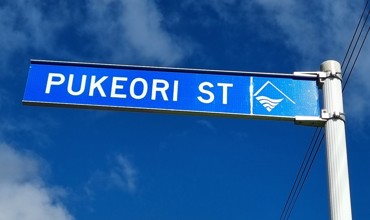The first English settlers to New Plymouth arrived in the early 1840s, on ships contracted by the Plymouth Company. Directors of this company included such notables as the Earl of Devon, Sir Charles Lemon and Lord Courtenay, all of whom were immortalised by Chief Surveyor Frederic Alonzo Carrington with street names while he was marking out the new city.
Sir Edward St Aubyn (1799-1872), 1st Baronet of St Michael’s Mount in Cornwall, was another shareholder and he too was honoured on the first maps, with St Aubyn Street. There is no evidence that he ever set foot in New Zealand but keen readers may recognise the name – English novelist Edward St Aubyn is his great-great-grandson.
Being so close to the sea St Aubyn Street has seen many hotels come and go over the years, including the Ship Hotel, the Beach, the Railway, the Terminus and the Tasman (now the Richmond Estate apartments). It was also once home to the Taranaki Club, whose grand old clubrooms are now apartments on the corner of St Aubyn and Queen.
St Aubyn Street has experienced severe flooding over the decades, particularly in 1935 and 1961, but still features several iconic heritage buildings and sites. Three were designed by architect Frank Messenger in the 1920s: the Devonport Flats (one of the largest blocks of flats in the country at the time), the Cenotaph and St Aubyn Chambers with its unusual curved façade. There is also the picturesque Whiteley Mission House, built in 1844 on land bought from local Māori by the Wesleyan Missionary Society.
Until the middle of 1971 St Aubyn Street only extended as far as Cutfield Road, with South Road then running all the way to Lawry Street in Moturoa. However, the Council decided that this portion of South Road would be renamed St Aubyn Street, meaning that 200 houses were renumbered. Council generously supplied new plastic letterbox numbers for those residents having to adjust to the change.
This story was originally published in the Taranaki Daily News.



